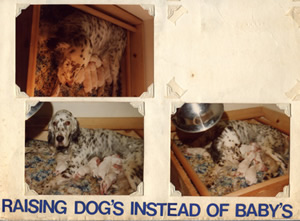
The Found Photograph and the Limits of Meaning
Barry Mauer
continued . . .
![]()
The greatest number of photographs I found, however, were family photographs.
Most of these photographs were lying in the street or in alleyways near my home at Columbus Avenue and 26th Street, a "sketchy" part of town. I thought I was strange for finding photographs nearly every time I went for a walk, but I also thought the world was strange for presenting me with so many artifacts of such a personal nature. I arranged about a hundred found photographs in an old album to show to friends. Some photographs are isolated on the page. Others are arranged according to a few simple grouping principles such as chronological order, thematic unity, and formal similarity. It was an unusual exhibit-a family photo album made from the photographs of total strangers, the detached artifacts of other lives. 
Most families have photo albums, but rarely do these albums enter the public realm. Instead, the family photo album represents the idea of family as an institution to the family members. Although the making of family photo albums occurs in private, public assumptions and a vernacular visual language influence the selection and arrangement of materials; work life is rarely represented in family photo albums because of the public assumption that work life is separate from family life.
The family photo album is an organizing system. The album-maker constructs a family history around themes, events, chronology, narratives, and visual likeness.
The album creates a context for the photographs that affects the ways they are perceived and understood; change the context and you change the meaning of the photographs. One artifact I found was a page from a photo album in which photographs sharing a common theme and formal similarity were joined with text.
1 | 2 | Next Node | 4 | 5 | 6 | 7 | 8 | 9 | 10 | 11 | 12 | Works Cited
|
Copyright © Enculturation 2001 |